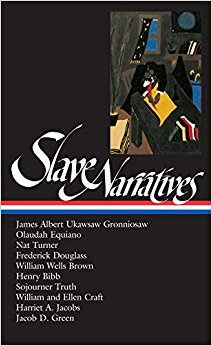Sojourner Truth was a slave, a mother, a freewoman, a preacher, a speaker and an activist at a time in US history that was full of change but also full of obstacles for a woman who was any of those things.

Sojourner Truth was born sometime in 1797, but her name wasn’t Sojourner Truth, it was Isabella Hardenbergh, or more accurately, Hardenbergh’s Isabella. She and her parents, James Baumfree and his wife Betsy, were all owned by Colonel Johannes and then his son, Charles, Hardenbergh of Ulster Country, New York.

The home of her first owner
When Isabella (she was called, “Belle” so we do, too) was born most northern US states had outlawed slavery, but not New York where she was raised speaking only the Dutch of her owner’s family. She never learned to read or write and, as was the horrific fate of a most slaves, she would have several owners of varying degrees of cruel. By the time she was 11 she was bought by a wealthy landowner named John Dumont and remain his property until she was 30.
We go over the hows, whys and details in the podcast, but Belle’s life as a slave ended when she walked away. “I did not runaway,” she said, “I walked by daylight.” She became legally free in 1827.

Behold! The Hessian Fly! This may have been what was holding up Sojourner’s freedom. It’s Latin name should give you a hint about what it does, and did, to crops: Mayetiola destructor
USDA via wikicommons
But her life was still not easy or free from trauma and drama. When her five year-old son was illegally sold to a plantation owner in Alabama she successfully sued in court to legally regain his custody. When she moved to New York City for a better life, Belle got mixed up with a cult community led by a creepy but charismatic con-man that ended in the death of one member, the arrest of the leader and the slander of his loyal housekeeper: Belle. She headed to court yet again, and successfully cleared her name only to lose her then teenage son when he set off on whaling ship and never returned.
After a series of horribly sad incidents, Belle felt as though she were being led by God to join the ranks of women and men who toured as itinerant preachers. She took a new name fitting a woman who wandered from place to place speaking the truth: Sojourner Truth.
Imagine a 6 foot tall former slave with a low-dutch accented, deep voice, speaking with faith, wit, intelligence and a mental songbook of her own composed hymns mesmerizing crowd after crowd. That was Sojourner.
She spent some time living in a intellectual community called the Northampton Association of Education and Industry. While there she met and lived with leading abolitionists and women’s right’s advocates of her time. For those of us who find inspiration from women who start famous projects later in life, Sojourner was about 53 when she became a skilled and popular speaker on the circuit with these big names. SHE was a big name!

She was a peer of Frederick Douglass, she had a meeting with Abe Lincoln…she was a big deal!
Her most famous speech, usually called Ain’t I a Woman? may not have contained those words at all. A journalist and friend of Sojourner’s who wrote for the Anti-Slavery Bugle, published a transcript of what she said shortly afterward. 12 years later writer, suffragist, and abolitionist Frances Dana Gage published her version of the speech and, for a variety of reasons that we cover in the podcast, Gage’s is the one that stuck yet was farthest from what was actually said.
The big question we had: did Sojourner make them laugh? Yes, we think so. Watch this.
(If you want to hear the versions we talked about in the episode, as well as read the versions side by side, The Sojourner Truth Project.)
Sojourner moved to another planned community in Battle Creek, Michigan but during the Civil War she spent her time working to help the recently freed people flooding into Washington, DC. She met with Abraham Lincoln, spoke and lived in D.C’s Freeman’s Village working to help people learn to support themselves, and again successfully sued after she was assaulted while being discriminated against on a streetcar.
Sojourner was still traveling and speaking past the age of 80 until she physically couldn’t do it any longer. Three years after she moved back to Michigan to live out her years with her grown children and their families, she died on November 26, 1883.

Can you imagine what Sojourner would think of this? Not just that her sculpture is the first to honor an African American woman in the US Capital but that the women who unveiled it in 2009 were in the positions that they were. Thanks, Sojourner! (Read more about this piece here, at aoc.gov.)
TIME TRAVEL WITH THE HISTORY CHICKS
Websites!
You really should read the Narrative of Sojourner Truth: An American Slave, and it’s pretty easy to do online here- Narrative- or visit your library. The book, Slave Narratives, has Sojourner’s as well as the narratives of several other former slaves of the same era:

Slave Narratives from Library of America
The Sojourner Truth Project is a great way to compare the versions of her Ain’t I a Woman speech as well as listen to the Anti-Slavery Bugle version delivered by several Afro Dutch women to give you an idea of what Sojourner may have sounded like, or, at least, what her accent may have sounded like.
You should read it, but don’t take it as a completely factual, this piece from The Atlantic in 1863, Sojourner Truth, the Libyan Sibyl by Harriet Beecher Stowe

“Inspired by Sojourner” does not mean it’s going to look like her. At all. Libyan Sibyl by William Wetmore Story Courtesy Metropolitan Museum of Art
More links to things we talked about like the Pinkster Celebration at Sleepy Hollow Park, Flowery Magdalene Laundry propaganda,and a Catholic perspective of the Magdelene Laundries.
And don’t forget Thomas Jefferson and the Hessian Fly. Ever. Never forget.
Tour all things Sojourner both in Massachusetts at the Northampton Association/ African American Heritage Trail video Florence, MA,and the Battle Creek Sojourner Truth Institute.
The film that’s in the works, Seed of the Free
Books!

Newest biography by Nell Irvin Painter

Slave Narratives from Library of America

By Wilma King

Creepy cult life

By Dick Russell

Yes, THAT John McCain.

If this doesn’t make sense, you didn’t listen to the episode. By Peter Jenkins

Young Adult level. Patricia McKissack and Frederick McKissack
For the kids:

by Andrea Davis Pinkney and Brian Pinkney

by Catherine Clinton and Shane Evans
The final song is Worth the Fight by Marie Hines


